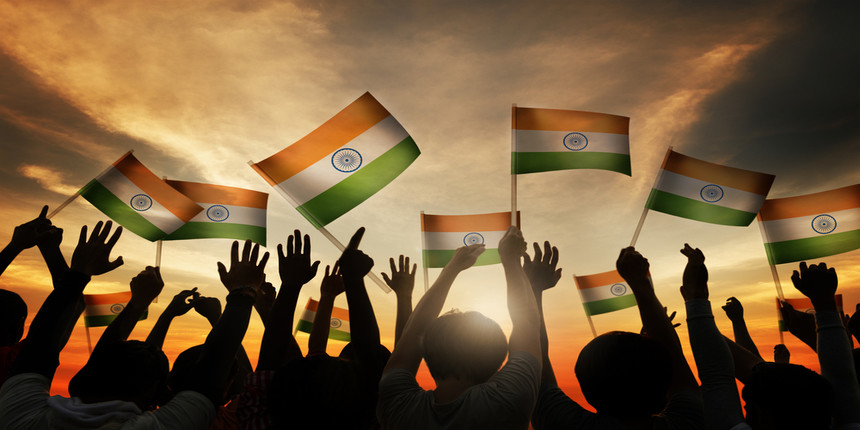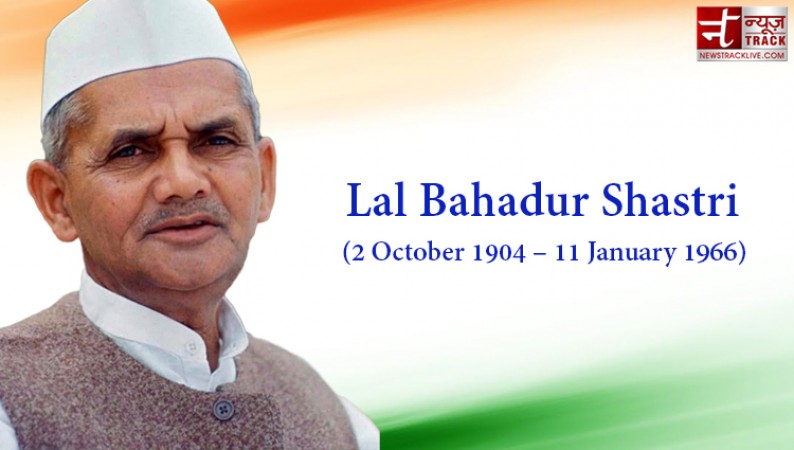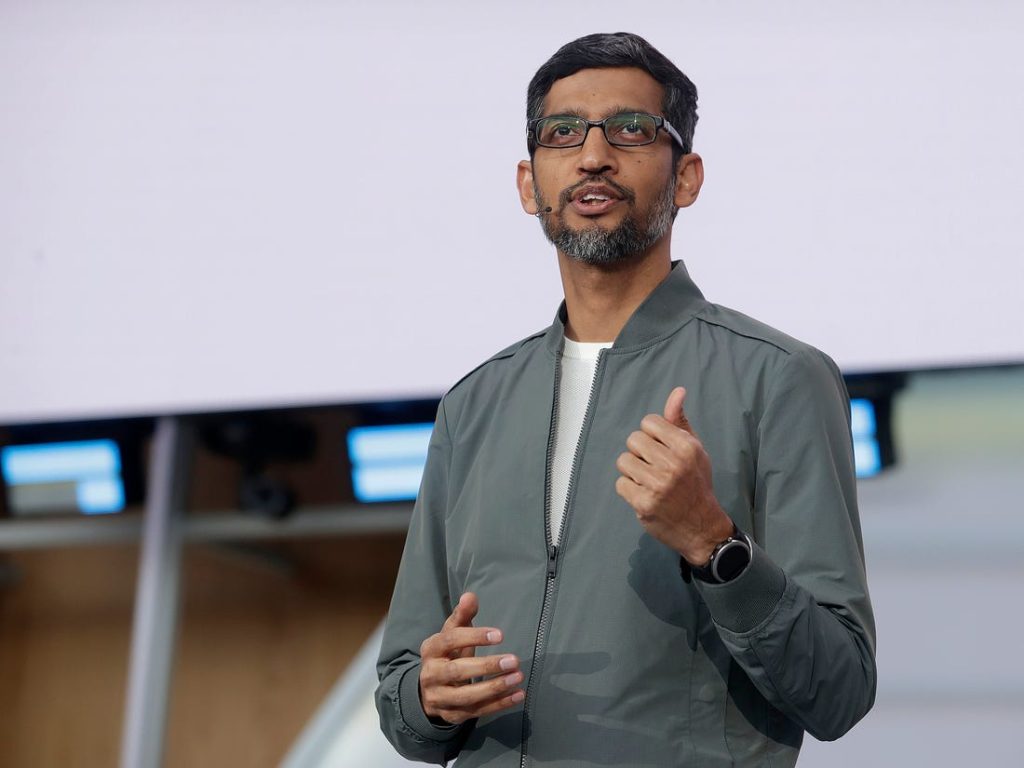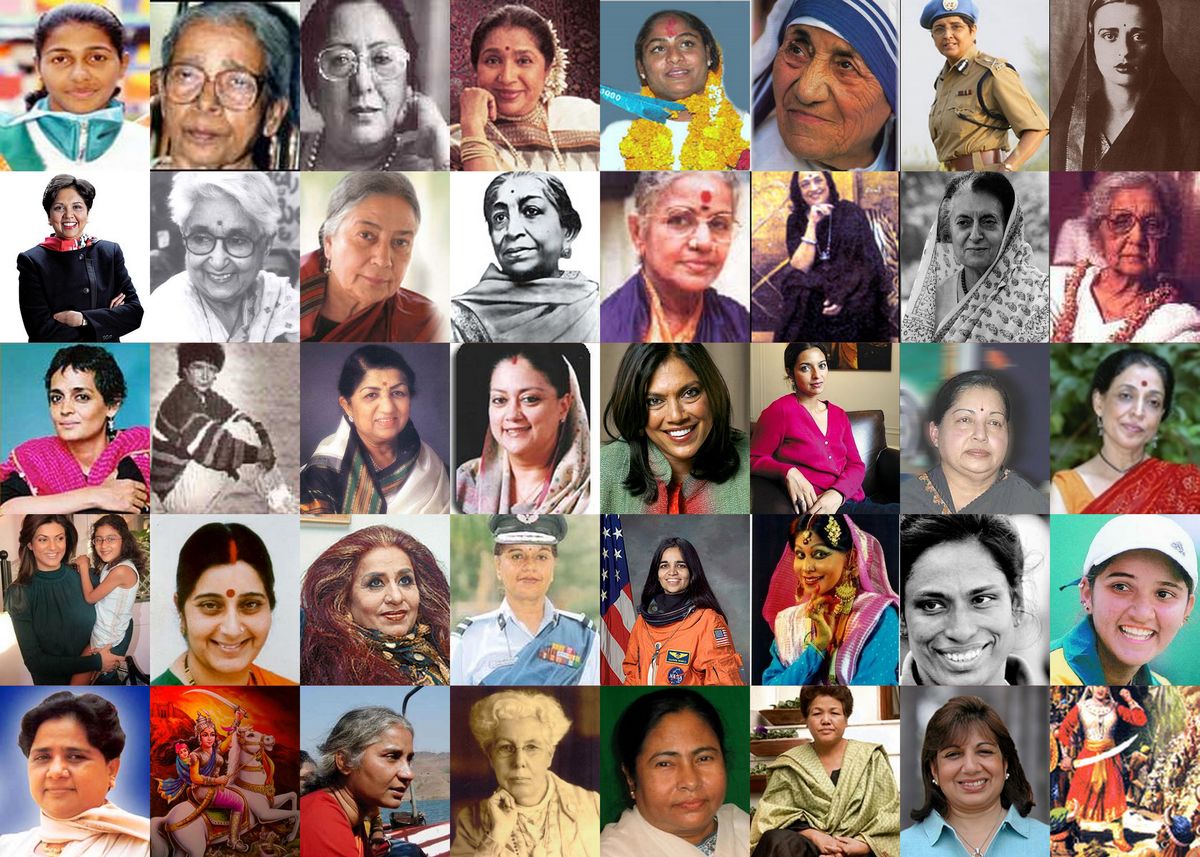India's Journey Since Independence: Triumphs, Challenges, and the Path to Prosperity
The Birth of a New Nation
The struggle for independence was not merely a political movement; it was a profound social and cultural awakening that united people from diverse backgrounds under the common cause of freedom. Gandhi's philosophy of non-violence (Satyagraha) played a pivotal role in mobilizing the masses and fostering a sense of unity and solidarity among Indians.
India's freedom struggle was marked by various movements and acts of civil disobedience, showcasing the determination of the Indian people to rid themselves of colonial oppression. From the Salt March led by Gandhi to the Quit India Movement, citizens across the country participated in these acts of defiance, displaying their unwavering commitment to a free India.
The partition of India and the subsequent communal violence were tragic consequences of independence. It remains a painful chapter in India's history, leaving deep scars on the social fabric of the nation. However, amidst the turmoil, leaders like Mahatma Gandhi and Jawaharlal Nehru worked tirelessly to promote harmony and unity among different religious and cultural communities.
Challenges of a Bloody Partition faced by India
The euphoria of independence was soon overshadowed by the painful partition of the subcontinent into India and Pakistan. The communal violence that followed resulted in the largest mass migration in history, leading to immense loss of life and property. The haunting image of refugees crossing the newly drawn borders in search of safety remains etched in the collective memory of the nation.
The partition of India was based on religious lines, with Hindus and Sikhs migrating to India, and Muslims migrating to Pakistan. This mass migration led to widespread violence and loss of life as communities clashed amidst the chaos. Millions were displaced from their ancestral homes, leading to a humanitarian crisis of unprecedented proportions.
In the wake of the partition, the governments of India and Pakistan faced immense challenges in rehabilitating refugees and providing them with the necessary support. It was a time of great strain on resources, infrastructure, and administrative machinery. Despite the difficulties, India managed to welcome and assimilate millions of refugees, showcasing the resilience and compassion of its people.
The partition of India also had a lasting impact on the relationship between India and Pakistan. The two countries have since faced multiple conflicts, including wars and territorial disputes, contributing to an atmosphere of mistrust and animosity. The quest for lasting peace and cooperation in the subcontinent remains a significant challenge for both nations.
Building a Democratic Framework in Bharat Led by Dr.B.R.Ambedkar
Post-independence, India faced the arduous task of constructing a robust democratic framework. The adoption of the Indian Constitution in 1950 laid the foundation for a democratic and secular state, enshrining fundamental rights and principles of governance. The image of Dr. B.R. Ambedkar, the architect of the Constitution, signing the historic document, symbolized the nation's commitment to justice and equality.
The Indian Constitution is one of the lengthiest and most comprehensive constitutions in the world. It not only provides the framework for the organization and functioning of the government but also guarantees fundamental rights to every citizen. These fundamental rights include the right to equality, freedom of speech and expression, right to education, and protection against discrimination.
One of the significant achievements of India's democracy has been the empowerment of marginalized communities. The reservation system was introduced to ensure representation and opportunities for historically disadvantaged groups. Scheduled Castes, Scheduled Tribes, and Other Backward Classes have been provided with reserved seats in educational institutions and government jobs to promote inclusivity and social justice.
However, India's democracy is not without its challenges. Corruption, lack of transparency, and the influence of money in politics are issues that continue to plague the system. Electoral reforms and strengthening of institutions are essential to address these concerns and uphold the principles of a vibrant democracy.
Green Revolution led by M.S.Swaminathan - Transforming Agriculture
In the 1960s and 1970s under the leadership of Lal Bahadur Shastri, India witnessed a remarkable transformation in its agricultural sector through the Green Revolution. With the introduction of high-yield crop varieties, modern irrigation techniques, and enhanced agricultural practices, the country achieved self-sufficiency in food production. The image of farmers harvesting bountiful crops exemplified the success of this agricultural revolution.
The Green Revolution was a turning point in India's agricultural history. Before the Green Revolution, the country faced recurrent famines and struggled to meet the growing demands of its population. The introduction of high-yield crop varieties, particularly wheat and rice, significantly increased agricultural productivity and output.
The use of modern inputs, such as fertilizers, pesticides, and improved irrigation methods, played a crucial role in the success of the Green Revolution. Additionally, the government's support through policies, subsidies, and the establishment of agricultural research institutions contributed to its achievements.
The Green Revolution not only alleviated food scarcity but also brought economic prosperity to the rural areas. Increased agricultural productivity generated surplus income for farmers, leading to improved living standards and investments in education and healthcare.
However, the Green Revolution also had unintended consequences. The intensive use of chemical fertilizers and pesticides led to environmental degradation and soil health deterioration in some regions. Over time, the over-reliance on certain crops resulted in reduced biodiversity and a vulnerability to pest outbreaks.
As India moves forward, sustainable agriculture and responsible resource management must be prioritized to ensure the long-term well-being of farmers and the environment. Organic farming, crop diversification, and the adoption of eco-friendly practices are essential for striking a balance between agricultural growth and environmental conservation.
Economic Liberalization and Globalization of India in 1990s
In 1991, India faced an economic crisis that necessitated significant reforms. The government under Prime Minister P.V. Narasimha Rao and Finance Minister Dr. Manmohan Singh initiated economic liberalization and opened the doors to globalization. These reforms encouraged foreign investment, privatization, and led to the emergence of a new era of economic growth. The image of bustling Indian cities with multinational company logos became synonymous with the country's global aspirations.
The economic liberalization of 1991 was a turning point for India's economy. Prior to this, the country followed a mixed economy model with heavy government intervention and regulation. The balance of payments crisis in 1991 forced the government to introduce reforms to revive the economy and attract foreign investments.
The IT and services sector emerged as major contributors to India's economic growth. The country's skilled workforce, proficiency in English, and cost-effectiveness made it an attractive destination for outsourcing services like software development, customer support, and data processing.
The economic reforms also encouraged entrepreneurship and innovation. Several Indian startups and businesses found success in various sectors, including technology, e-commerce, and finance. The success stories of companies like Flipkart, Ola, and Paytm showcased India's growing entrepreneurial ecosystem.
However, the benefits of globalization have not reached all sections of society equally, and income inequality has become a growing concern. The economic divide between the urban and rural areas widened, and certain sections of society were left behind in the race for economic prosperity.
To address the challenges of globalization, the government has been focusing on inclusive growth and social welfare programs. Initiatives like the Mahatma Gandhi National Rural Employment Guarantee Act (MGNREGA), the National Rural Livelihood Mission (NRLM), and the Pradhan Mantri Jan Dhan Yojana (PMJDY) aim to uplift the economically disadvantaged sections of society and provide them with opportunities for sustainable livelihoods.
Technological Advancements and IT Boom after Economic Liberalization in India
The turn of the millennium saw India make significant strides in technology and information technology. With a pool of skilled engineers and IT professionals, the nation became a global IT hub, offering software services to the world. The image of young techies working in state-of-the-art offices showcased India's prowess in the digital age.
The IT boom in India was fueled by a combination of factors, including a large pool of technically skilled professionals, a young and educated workforce, and a favorable business environment. The country's IT industry became a significant contributor to India's GDP and employment generation.
The success of Indian IT companies, both in India and abroad, highlighted the potential of the country's knowledge-based economy. Multinational corporations increasingly looked to India for outsourcing various services, leading to a surge in IT exports.
The growth of the IT sector also had a positive impact on related industries. The demand for office spaces, infrastructure development, and support services created a ripple effect, contributing to India's overall economic growth.
Moreover, India's IT professionals have made their mark on the global stage. Many Indian-origin CEOs and entrepreneurs have led renowned technology companies worldwide, earning recognition for their leadership and innovation.
However, India's IT sector has faced challenges as well. The industry is vulnerable to fluctuations in global markets, and competition from other emerging economies has intensified. The government and the private sector must continue to invest in research, development, and skilling initiatives to maintain India's competitive edge in the IT domain.
As India moves towards a more digital future, it must also address concerns related to data privacy, cybersecurity, and digital literacy. A robust digital infrastructure and policies for the safe and ethical use of technology are crucial for India's sustainable development in the digital age.
Challenges of Poverty and Inequality faced by the People of India till Date
Despite impressive progress, India grappled with significant challenges, particularly poverty and income inequality. A large section of the population remained deprived of basic necessities, hindering the nation's inclusive growth. The image of slums juxtaposed against opulent skyscrapers highlighted the stark disparities that persisted.India's vast population and uneven economic development have perpetuated income disparities. While the middle class and urban areas have experienced significant growth and prosperity, large sections of rural India and urban slums continue to face deprivation and lack of access to basic amenities.
To address the challenges of poverty and inequality, the Indian government has implemented several poverty alleviation programs and social welfare schemes. The Mahatma Gandhi National Rural Employment Guarantee Act (MGNREGA) guarantees 100 days of employment to rural households, helping to create livelihood opportunities and strengthen rural infrastructure.
Other initiatives like the National Food Security Act (NFSA), the Pradhan Mantri Awas Yojana (PMAY), and the Pradhan Mantri Ujjwala Yojana (PMUY) aim to provide food security, affordable housing, and clean cooking fuel to the economically disadvantaged.
However, the effectiveness of these programs depends on efficient implementation, monitoring, and targeting. There is a need to strengthen governance mechanisms, improve transparency, and plug leakages to ensure that the benefits reach the intended beneficiaries.
Additionally, India's education and healthcare sectors play a vital role in reducing poverty and promoting social mobility. Investments in quality education, skill development, and healthcare infrastructure are crucial for empowering individuals to escape the cycle of poverty.
promoting inclusive growth and reducing inequality requires a multi-faceted approach. It entails not only targeted social welfare programs but also equitable economic policies, sustainable development practices, and measures to promote equal opportunities for all.
Striving for Gender Equality in the Indian society
Throughout its journey, India has also confronted gender disparities and the need for empowering women. From legislative reforms to grassroots movements, strides have been made, but there is still much work to be done. The image of women breaking barriers and excelling in various fields showcased the potential of gender equality.
Historically, women in India have faced discrimination, violence, and limited access to education and economic opportunities. Initiatives like the Right to Education Act, Beti Bachao, Beti Padhao (Save the Daughter, Educate the Daughter), and the provision of reservation for women in local government bodies have been steps in the right direction.
Women in India have been making their mark in various fields, challenging traditional gender norms, and excelling in areas traditionally dominated by men. From sports to science, politics to arts, women have shattered glass ceilings and proven their capabilities time and again.
Despite these strides, India's gender gap persists in areas such as labor force participation, wages, and representation in higher-level decision-making roles. Addressing these disparities requires addressing deeply ingrained societal norms and attitudes towards gender roles.
Changing mindsets and promoting gender equality from an early age are critical to building an inclusive society. Initiatives that focus on gender sensitization, awareness, and women's empowerment can contribute to breaking the barriers that hinder women's progress.Additionally, addressing violence against women and ensuring their safety is paramount. Strict implementation of laws, fast-track courts for handling cases of violence, and increasing awareness on gender-based violence are essential steps towards creating a safer environment for women.
The active involvement of men in the fight for gender equality is crucial. Engaging men as allies in gender-sensitive initiatives can help challenge patriarchal norms and create a more inclusive society where both men and women can thrive.
Education and Innovation of Indians in various fields
Education has been a cornerstone of India's progress, nurturing a talented workforce and fostering innovation. Indian scientists and researchers have made significant contributions in various fields, putting the nation on the global scientific map. The image of students engrossed in learning reflected India's commitment to education.
India has a vast network of educational institutions, including prestigious universities and research centers. The country's achievements in space exploration, information technology, pharmaceuticals, and other areas bear testimony to its intellectual potential.
Several Indian scientists and researchers have gained international recognition for their contributions. From Nobel laureates like C.V. Raman and Venkatraman Ramakrishnan to ISRO scientists like K. Sivan, India's scientific community has made significant strides in diverse disciplines.
Moreover, the establishment of the Indian Institutes of Technology (IITs), Indian Institutes of Management (IMs), and other premier educational institutions has played a pivotal role in nurturing a skilled workforce and fostering a culture of innovation and entrepreneurship.
However, India's education system also faces challenges. While access to education has improved, the quality of education remains a concern, particularly in rural areas. There is a need for curriculum reform, teacher training, and investment in educational infrastructure to bridge the quality gap.
Innovation and research in India require greater support and investment. Encouraging research and development in both the public and private sectors can lead to breakthroughs in science, technology, and healthcare, positioning India as a global leader in innovation.
Promoting STEM (Science, Technology, Engineering, and Mathematics) education and research, supporting startups and entrepreneurs, and creating an ecosystem that fosters innovation are essential for India's sustainable development and global competitiveness.
India's Soft Power and Cultural Heritage and It's Impact around the World
India's rich cultural heritage and soft power have resonated globally through its art, music, dance, and cinema. Bollywood, in particular, has gained immense popularity worldwide, transcending cultural barriers. The image of colorful festivities and traditional performances exemplified India's cultural diversity and vibrancy.
Indian culture is a tapestry of diversity, with its roots stretching back thousands of years. From classical dance forms like Bharatanatyam and Kathak to traditional music and folk art, India's cultural heritage is a testament to the creativity and artistic prowess of its people.Indian cuisine is another aspect of its soft power. With its rich flavors and diversity, Indian food has gained popularity around the globe. Restaurants serving Indian delicacies are found in almost every major city worldwide.
The film industry, Bollywood, has become synonymous with Indian cinema. Its vibrant storytelling, colorful dance sequences, and melodious songs have won the hearts of audiences worldwide. Bollywood has also played a significant role in promoting India as a tourist destination, showcasing its scenic beauty and cultural richness on the silver screen.
India's soft power extends to its spiritual and philosophical heritage as well. Yoga, meditation, and Ayurveda have become global phenomena, with millions of people adopting these practices for their physical and mental well-being.
My Conclusion on India's Progress since Independance
India's journey since independence has been a tapestry of triumphs and challenges, a testament to the resilience and spirit of its people. From breaking free from colonial rule to becoming a global economic player, India has come a long way. However, the nation continues to grapple with the complexities of poverty, inequality, and other socio-economic issues. As India strides into the future, it must remain committed to fostering inclusive growth, upholding democratic values, and building a society where every citizen can thrive. The coming years will undoubtedly witness more significant milestones in India's journey of progress and transformation. As the nation forges ahead, it must draw inspiration from its past, learn from its successes and failures, and work collectively towards a more prosperous, equitable, and harmonious future. India's incredible diversity, cultural richness, and resourceful populace provide the foundation for a brighter tomorrow, where the nation can fulfill its true potential on the global stage. By addressing the challenges with determination and inclusivity, India can continue its journey towards becoming a prosperous, harmonious, and respected member of the international community.
*****
















Comments
Post a Comment